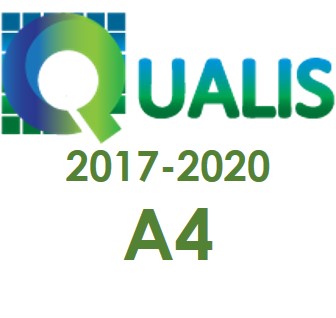Usos del cine en la escuela: una experiencia atravesada por la visualidad ( The relationships between film and schooling: an experience crossed by visuality)
DOI:
https://doi.org/10.22481/el.v12i1.1241Palavras-chave:
Cine, Educación, Estudios visuales, Regímenes visuales contemporáneos, Programas educativos, Contemporary visual regimes, Educational programsResumo
El artículo se propone examinar algunos presupuestos sobre los vínculos entre cine y escuela. En primer lugar, cuestiona la tesis de que la traducción escolar es siempre empobrecedora, subrayando aspectos de esta mediación que son significativos. En segundo lugar, plantea otra genealogía de las relaciones entre cine y escuela, valiéndose de los estudios visuales y la historia de las tecnologías visuales. En tercer lugar, trae ejemplos de investigaciones recientes en escuelas secundarias de Argentina y México, en los que se advierten cambios importantes en la experiencia del cine de estudiantes y profesores y en los regímenes visuales contemporáneos.
PALABRAS-CLAVES: Cine. Educación. Estudios visuales. Regímenes visuales contemporáneos. Programas educativos.
ABSTRACT
The text examines some assumptions on the relationships between film and schooling present in educational literature and programs. First, it problematizes the thesis that the schooling of film is always an impoverishment of its transformative potential, underlining that there are worthy aspects in this mediation. Second, it proposes a genealogy of the links between schooling and film grounded on visual studies and the history of visual technologies. Third, it offers examples of research conducted in secondary schools in Argentina and Mexico that point to significant changes in how students and teachers experience film and and relate to contemporary visual regimes.
KEYWORDS: Cinema. Education. Visual Studies. Contemporary visual regimes. Educational programs.
Downloads
Referências
AZEVEDO, A. L. de Faria. Fora de quadro: discursos sobre educação e cinema na Argentina e no Brasil (1910/1940- 1990/2010). 2014. Tese (Doutorado em Educação) – Universidade Federal de Minas Gerais, Belo Horizonte, 2014 (en etapa final de presentación).
BENASAYAG, A. El cine de ficción en la escuela argentina. Revisión histórica, hipótesis de trabajo y nuevos interrogantes. Ensemble. Revista electrónica de la Casa Argentina de Paris, ano, 6, n. 8, 2012. Disponible en: <http://ensemble.educ.ar/?p=2691&numero=30>. Acceso en: 18 de enero de 2014.
BENJAMIN, W. Paris, capital del siglo XIX. In: ______. Poesía y capitalismo. Iluminaciones II. Madrid: Taurus, 1988. p. 171-190.
BERGALA, A. La hipótesis del cine. Pequeño tratado sobre la transmisión del cine en la escuela y fuera de ella. Barcelona: Laertes, 2007.
CONSEJO NACIONAL DE EDUCACIÓN. Digesto de instrucción primaria del año 1920. Buenos Aires: Consejo Nacional de Educación, 1920.
CRARY, J. Techniques of the Observer. On vision and modernity in the Nineteenth Century. Cambridge and London: MIT Press, 1990.
______. Suspensions of Perception. Attention, Spectacle and Modern Culture. Cambridge, MA: The MIT Press, 2000.
CUBAN, L. Frogs Into Princes. Writings on School Reform. New York: Teachers’ College Press, 2008.
CURTIS, S. Between observation and spectatorship: Medicine, movies and mass culture in imperial Germany. In: KREIMEIER, K.; LIGENSA, A. (Org.). Film 1900: Technology, Perception, Culture. Eastleigh and Bloomington: John Libbey/Indiana University Press, 2009. p. 87-98.
CHERCHI USAI, P. Film Curatorship. Archives, Museums, and the Digital Marketplace. Viena: Österreichisches Filmmuseum & SYNEMA-Gesellschaft für Film und Medien, 2008.
DESBARRATS, F. Origines, conditions et perspectives idéologiques de l'enseignement du cinéma dans les lycées. Thèse doctorale, Université de Toulouse-Le Mirail - Ecole Superieure d'Audiovisuel,
Toulouse, 2001.
DUSSEL, I. Curriculum y autoridad cultural. Metáforas para pensar en los desafíos contemporáneos. In: MORGADO, José Carlos; SANTOS, Luciola Licinio de Castro Paixão; PARAISO; Marlucy Alves (Org.). Estudos curriculares. Um debate contemporâneo. Curitiba: CVR Editora, 2013. p. 11-36.
______. Más allá del mito de los “nativos digitales”. Jóvenes, escuelas y saberes en la cultura digital. In: SOUTHWELL, M. (Org.). Entre generaciones. Exploraciones sobre educación, cultura e instituciones. Rosario: FLACSO/Homo Sapiens, 2012. p. 183-213.
______; GUTIERREZ, D. (Org.). Educar la mirada: políticas y pedagogías de la imagen. Buenos Aires: Editorial Manantial, 2006.
FOSTER, H. Preface. In: ______. (Ed.).Vision and Visuality. Seattle: Bay Press and DIA Art Foundation, 1988. p. ix-xiv.
FOUCAULT, M. Technologies of the Self. In: MARTIN, L. GUTMAN, H.; HUTTON, P. (Org.). Technologies of the Self. A Seminar with Michel Foucault. Armherst, MA: The University of Massachusetts Press, 1988. p. 16-49.
______. Vigilar y castigar. Nacimiento de la prisión. Trad. por A. Garzón del Campo. México D.F.: Siglo XXI, 1976.
FRESQUET, A. (Org.). Dossiê Cinema e Educaçao #1. Uma relaçao sob a hipótese de alteridade de Alain Bergala. Rio de Janeiro: Booklink; CINEAD-LISE-UFRJ, 2011.
GUNNING, T. Moving Away from the Index. Cinema and the Impression of Reality. In: KOCH, G.; PANTENBURG, V.; ROTHÖLER, S. (Org.). Screen Dynamics. Mapping the Borders of Cinema. Viena:
Österreichisches Filmmuseum & SYNEMA-Gesellschaft für Film und Medien, 2012. p. 42-60.
HANSEN, M. B. Cinema and Experience. Sigfried Kracauer, Walter Benjamin, and Theodor W. Adorno. Berkeley and Los Angeles: University of California Press, 2012.
KITTLER, F. Gramophone, Film, Typewriter. Traducido por G. Winthrop-Young y M. Wutz. Palo Alto, CA: Stanford University Press, 1999.
KNÖRER, E. Movable Images in Portable Devices. In: KOCH, G.; PANTENBURG, V.; ROTHÖLER, S. (Org.). Screen Dynamics. Mapping the Borders of Cinema. Viena: Österreichisches Filmmuseum & SYNEMA-Gesellschaft für Film und Medien, 2012. p. 169-178.
MANNONI, L. The Great Art of Light and Shadow. Archeology of the Cinema. Trad. por R. Crangle. Exeter, UK: University of Exeter Press, 2000.
MANNONI, L.; PESENTI CAMPAGNOLI, D. Lanterne magique et film peint. 400 ans de cinéma. Paris: Éditions de La Martinière/La Cinémathèque française, 2009.
MASSCHELEIN, J.; SIMMONS, M. In defence of the school. A public issue. Trad. por J. McMartin. Leuven: E-ducation, Culture and Society Publishers, 2013.
MIRZOEFF, N. On Visuality. Journal of Visual Culture, v. 5, n. 1, p. 53-79, 2006.
______. The Right to Look. A Counterhistory of Visuality. Durham, NC & London: Duke University Press, 2011.
MITCHELL, W.T.J. Showing seeing. Journal of Visual Culture, v. 1, n. 2, p. 165-181, 2002.
NEGRONI, M. Pequeño Mundo Ilustrado. Buenos Aires: Caja Negra Editores, 2011.
PETERS, M.; BULUT, E. (Org.). Cognitive Capitalism, Education and Digital Labor. New York: Peter Lang, 2011.
PLA VALLS, E. Las relaciones peligrosas: cine y enseñanza, algo más que buenos propósitos. Con-Ciencia Social, Sevilla-España, n. 11, p. 35-54, 2007.
QUINTANA, A. Vers un art virtual? A l ́ère du numérique, le cinéma est toujours une représentation du réel. Paris: Ed. du Cahiers du Cinéma, 2009.
RANCIÈRE, J. Le destin des images. Paris: La Fabrique Editions, 2003.
______. El espectador emancipado. Buenos Aires: Manantial, 2008.
SERRA, M. S. Cine, escuela y discurso pedagógico. Articulaciones, inclusiones y objeciones en el siglo XX en Argentina. Buenos Aires: Libros del Zorzal, 2011.
STIEGLER, B. The Carnival of the New Screen: From Hegemony to Isonomy. In: SNICKERS, P.; VONDERAU, P. (Org.). The YouTube Reader. Stockholm: National Library of Sweden, 2009. p. 40-59.
STRAUVEN, W. (Org.). The Cinema of Attractions Reloaded. Amsterdam: Amsterdam University Press, 2006.
TEIXEIRA, I. A. C.; LOPES, J. S. M. (Org.). A escola vai ao cinema. Belo Horizonte: Autêntica, 2003.
TYLER, W. Towering TIMSS or Learning PISA? Vertical and Horizontal Models of International testing Regimes. In: SINGH, P.; SADOVNIK, A.; SEMEL, S. (Ed.). Toolkits, translation devices and conceptual
accounts: essays on Basil Bernstein’s sociology of knowledge. New York: Peter Lang Publ., 2010. p. 143-160.
WILLIAMS, R. Historia y cultura común. Trad. y editado por Alicia García Ruiz. Madrid: Los Libros de la Catarata, 2008.
Downloads
Publicado
Edição
Seção
Licença
Autores que publicam em Estudos da Língua(gem) concordam com os seguintes termos:
Estudos da Língua(gem) mantém os direitos autorais das contribuições publicadas e disponibiliza seu conteúdo gratuitamente por meio do portal. Autores têm permissão e são estimulados a publicar e distribuir seu trabalho online em repositórios institucionais ou na sua página pessoal, com reconhecimento de autoria e créditos de publicação inicial nesta revista, indicando endereço online.












